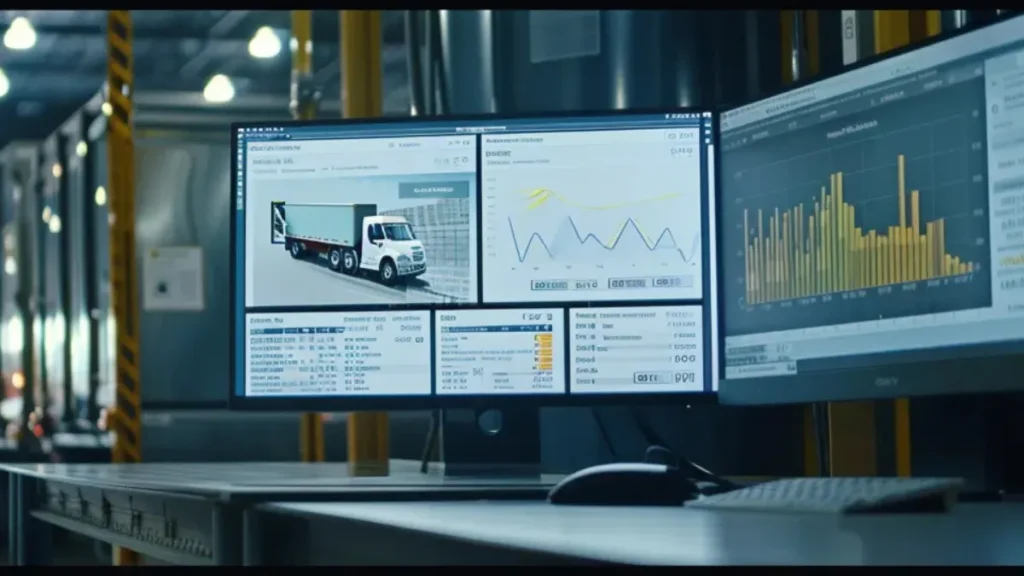In the competitive landscape of delivery services, owners have to constantly seek ways to improve their business operations. This is where the implementation of essential tools comes into play.
One critical element for any delivery business is maintaining a fleet of vehicles that are reliable and fuel-efficient. Implementing the use of Esso Diesel in Canada can help reduce operational costs, thanks to its high-quality fuel that offers improved engine cleanliness and fuel economy. Coupled with fuel management systems, delivery businesses can monitor and control fuel usage effectively.
Additionally, communication tools are indispensable for coordinating with delivery personnel on the move. Here, tools like two-way radios and VoIP solutions can prove invaluable by keeping your team connected without incurring massive communication expenses.
Last but not least, investing in robust security measures for both digital data and physical goods is non-negotiable. High-end encryption for data and GPS locks for vehicles can protect your business from theft and cyberattacks, ensuring that both your customers’ information and their packages are safe throughout the delivery process.
Maximizing Efficiency With Route Optimization Software

Efficiency is the backbone of any successful delivery service, which is why route optimization software is an indispensable tool for delivery businesses. This software calculates the most efficient routes for your drivers, taking into account traffic, weather, and construction delays. With optimized routes, you can ensure quicker deliveries and reduced fuel consumption.
Route optimization tools also allow for dynamic re-routing, which can be particularly helpful when unexpected delays or emergencies arise. By using these tools, dispatchers can immediately redirect drivers to ensure that delays are minimized. This flexibility ensures that customer satisfaction remains high, as deliveries arrive on time.
Moreover, by analyzing the travel patterns and common routes, these tools provide insights for future planning and can identify opportunities for further optimization. Over time, this can lead to even more streamlined operations and cost savings as patterns and potential issues are recognized and addressed proactively.
Streamlining Orders and Deliveries With Management Platforms

Delivery management platforms are central to streamlining orders and ensuring the smooth operation of your delivery service. These systems serve as a hub for your entire delivery operation, enabling you to consolidate orders, dispatch, track, and manage deliveries all in one place.
With features like automatic order entry, inventory tracking, and integration with e-commerce platforms, these management tools reduce manual entry errors and save precious time. They also ensure that inventory levels are accurately maintained and updated in real time, preventing overstocking or stockouts and maintaining a healthy supply chain.
By integrating management platforms with other tools, such as accounting software and customer relationship management (CRM) systems, delivery businesses can achieve a seamless flow of information across different departments. This integration leads to better data accuracy, improved decision-making processes, and ultimately, a more cohesive business operation.
Building Customer Trust with Real-Time Tracking Features
One of the most powerful ways to build customer trust is by offering real-time tracking features. The ability for customers to see where their delivery is at any given moment not only provides peace of mind but also significantly enhances the entire delivery experience.
Real-time tracking tools also equip the delivery team with valuable information that can be used to communicate with customers proactively. In the event of an unforeseen delay, real-time data enables customer service representatives to provide customers with accurate updates, turning potential frustration into an experience of effective communication and transparency.
Enhanced visibility brought about by tracking technology also aids in accountability within the delivery team. Drivers are more likely to adhere to schedules and routes when they know they are being monitored, thus improving overall performance.
Furthermore, with advanced tracking features, businesses can analyze delivery times, identify any bottlenecks, and make informed decisions on how to improve logistics. This continuous improvement cycle ensures that the business remains customer-centric, keeping their trust and satisfaction as primary goals.
Leveraging Data Analytics for Delivery Performance Insights
Delivery businesses are often awash with data, but it’s the effective use of this data through analytics that can provide invaluable insights into delivery performance. Data analytics tools allow businesses to measure key performance indicators (KPIs), identify patterns, and evaluate the efficiency of their delivery operations. These insights can lead to informed decision-making and strategic planning.
Data collected from deliveries can also be utilized to predict future trends and customer demands. Analytics tools provide the capability to perform these predictions with a level of precision that manual analysis simply cannot match.
Overall, delivery business owners who harness the power of these essential tools are setting their operations up for success. By leveraging these technologies, delivery businesses can look forward to a future of growth and continued improvement.
Read More:

